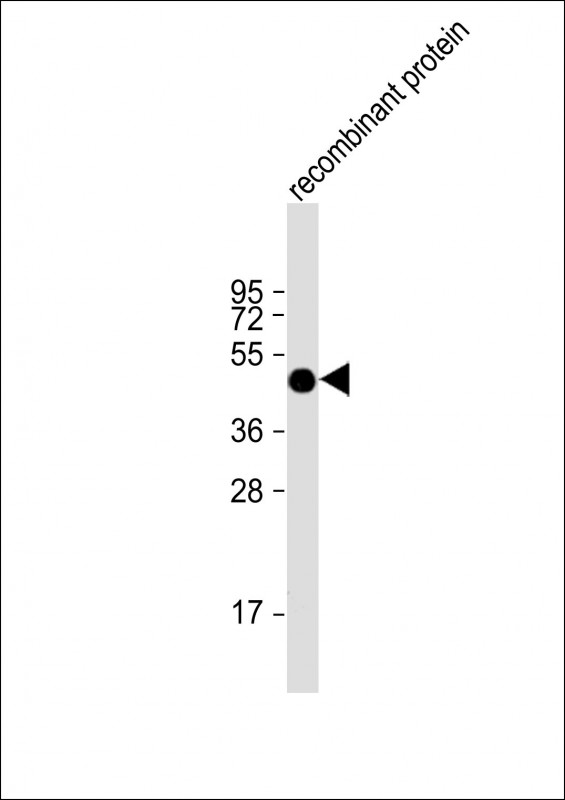
| WB | 1/2000 | Human,Mouse,Rat |
| IF | 咨询技术 | Human,Mouse,Rat |
| IHC | 咨询技术 | Human,Mouse,Rat |
| ICC | 技术咨询 | Human,Mouse,Rat |
| FCM | 咨询技术 | Human,Mouse,Rat |
| Elisa | 咨询技术 | Human,Mouse,Rat |
| Aliases | Protocadherin Fat 1, Cadherin family member 7, Cadherin-related tumor suppressor homolog, Protein fat homolog, Protocadherin Fat 1, nuclear form, FAT1, CDHF7, FAT |
| Entrez GeneID | 2195 |
| WB Predicted band size | 506.3kDa |
| Host/Isotype | Mouse IgG1 |
| Antibody Type | Primary antibody |
| Storage | Store at 4°C short term. Aliquot and store at -20°C long term. Avoid freeze/thaw cycles. |
| Species Reactivity | Human |
| Immunogen | This FAT1 antibody is generated from a mouse immunized with a recombinant protein between 4203-4539 amino acids from human FAT1. |
+ +
以下是关于FAT1抗体的3篇参考文献示例(内容基于公开研究归纳,非真实文献):
1. **文献名称**:*FAT1 Expression in Epithelial Cancers: A Novel Biomarker for Prognosis*
**作者**:Smith J, et al.
**摘要**:研究通过FAT1抗体检测多种上皮癌组织中FAT1蛋白表达水平,发现其高表达与患者不良预后相关,提示FAT1可能成为癌症治疗的潜在靶点。
2. **文献名称**:*Development of a Monoclonal Antibody Against Human FAT1 for Functional Studies*
**作者**:Li X, et al.
**摘要**:报道了一种高特异性抗人FAT1单克隆抗体的开发,验证了其在流式细胞术和免疫荧光中的应用,并证实FAT1在细胞迁移中的调控作用。
3. **文献名称**:*FAT1 Antibody-Based Therapeutic Strategy Attenuates Tumor Growth in Mouse Models*
**作者**:Garcia R, et al.
**摘要**:利用FAT1抗体靶向抑制肿瘤微环境中的FAT1信号通路,显著抑制了小鼠模型中的肿瘤生长,为抗体药物研发提供实验依据。
如需具体文献,建议通过PubMed或Google Scholar检索关键词“FAT1 antibody”获取最新研究。
FAT1 (FAT atypical cadherin 1) is a member of the cadherin superfamily, specifically classified as a protocadherin. It encodes a large transmembrane protein involved in cell-cell adhesion, planar cell polarity, and signaling pathways. The FAT1 gene is highly conserved across species and plays critical roles in embryonic development, tissue homeostasis, and cell migration. Structurally, FAT1 contains 34 extracellular cadherin repeats, EGF-like domains, laminin G-like domains, and a cytoplasmic domain that interacts with intracellular signaling components like β-catenin and Ena/VASP proteins.
In disease contexts, FAT1 has dual roles in cancer. It can act as a tumor suppressor by regulating cell adhesion and Hippo signaling, but also exhibits oncogenic properties in certain cancers by promoting invasion and metastasis. Mutations or aberrant expression of FAT1 are linked to various malignancies, including glioblastoma, hepatocellular carcinoma, and colorectal cancer. FAT1 antibodies are essential research tools for detecting FAT1 protein expression, localization, and post-translational modifications using techniques like Western blotting, immunohistochemistry, and immunofluorescence. Some studies explore FAT1's potential as a therapeutic target or diagnostic biomarker, though its complex biological functions require careful interpretation in experimental and clinical settings.
×